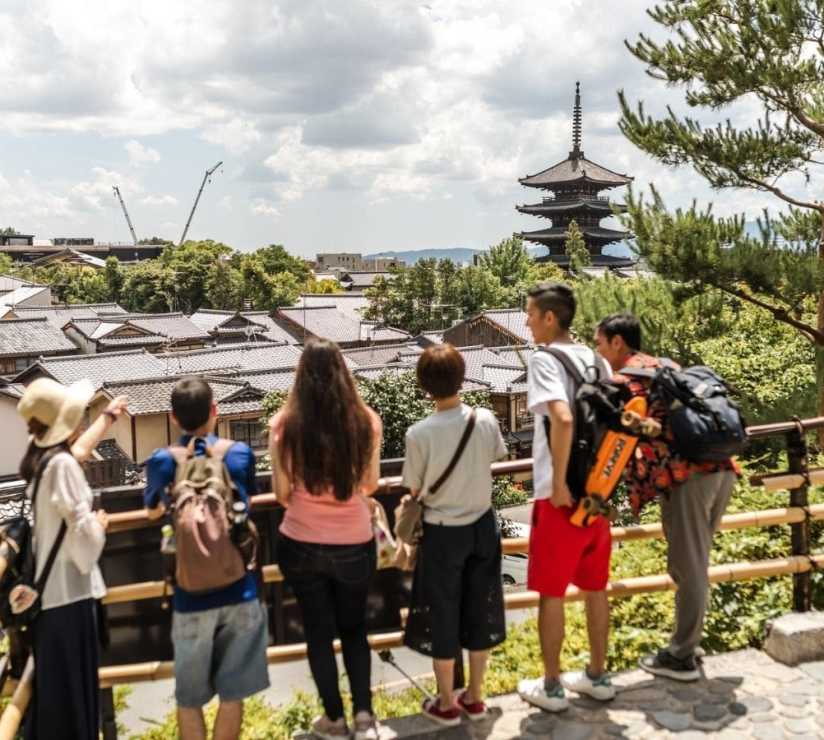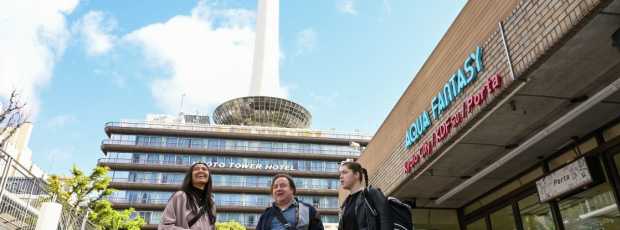Table Of Contents
- Welcome to Arashiyama: My Morning Ritual
- The Arashiyama Bamboo Grove: Silence and Shadows
- Temple Rhythms: My Spiritual Loop
- Where Can You Find Kyoto's Most Peaceful Tea Ceremony?
- Cherry Blossom Walks Along the Katsura River
- A Glimpse into Gion: Festivals, Geisha, and Heritage
- What Changes With the Seasons in Arashiyama?
- Escaping the Tourist Trail: My Hidden Tea House
- The Serene Return: Dusk at Daikaku-ji
- Kyoto, Always in Motion
Welcome to Arashiyama: My Morning Ritual
I wake before the city stirs. This has been my rhythm for thirty years in Kyoto, and Arashiyama rewards those who greet her early. The mist clings to the mountains like silk scarves, and the things to do in Arashiyama Kyoto unfold naturally when you move with the district's quiet pulse rather than against it.
My mornings begin with a walk down Saga-Toriimoto, where the old wooden houses still exhale incense from evening prayers. The shopkeepers are sweeping their thresholds, and if you listen carefully, you can hear the distant temple bells echoing from the hillsides. This isn't the Arashiyama of afternoon crowds, this is the Arashiyama that belongs to Kyoto itself.
The reverence here runs deeper than guidebooks can capture. When I pause at the small shrine near my home, lighting a stick of incense for safe travels, I remember that this simple act connects me to generations of pilgrims who have walked these same paths seeking the sacred.
The Arashiyama Bamboo Grove: Silence and Shadows
The Arashiyama Bamboo Forest draws visitors from around the world, yet even in its fame, it holds mysteries. I enter from the northern path, where fewer people venture, and the bamboo seems to lean closer, creating a natural cathedral of green light.
The grove speaks in whispers, the rustling of leaves creates what we call "the bamboo symphony." Traditional culture teaches us that bamboo symbolizes flexibility and strength, bending without breaking. Walking this path among these towering stalks that have witnessed centuries of pilgrims; including Japan's revolutionary samurai warriors who once sought solitude here, I understand why ancient poets found such profound metaphors in the Arashiyama Bamboo Forest.
Early morning or late afternoon offers the most intimate experience. The filtered sunlight creates patterns that shift with every breeze, and if you pause long enough, you'll notice how the light plays differently in each season, golden in autumn, silvery in winter, emerald bright in spring.
Temple Rhythms: My Spiritual Loop
Tenryu-ji anchors my spiritual geography in Arashiyama. This temple, with its UNESCO World Heritage status, houses one of Kyoto's most contemplative gardens. I've watched this same view change through countless seasons, and still it surprises me.
The temple garden at Tenryu-ji demonstrates the essence of Japanese aesthetics; asymmetrical balance, borrowed scenery from the mountains beyond, and the way cultivated beauty enhances rather than competes with natural forms. I often sit here after the morning tour groups pass, watching how the light moves across the pond's surface.
From Tenryu-ji, I follow the quieter path to Gio-ji, a smaller temple that few tourists discover. This tiny Buddhist nunnery, hidden among towering maples, offers the kind of intimacy that larger temples cannot provide.
At Gio-ji, the moss garden creates a carpet of green velvet, punctuated by stone lanterns and the gentle sound of water trickling over rocks. The temple tells the story of Gio, a dancer who retired here after falling from imperial favor; a reminder that beauty and impermanence walk hand in hand in Japanese culture.
Looking for a private city experience in Kyoto?
Explore the city with a local who plans a private day just for you; no groups, no scripts.
Where Can You Find Kyoto's Most Peaceful Tea Ceremony?
The tea ceremony in Arashiyama differs from the formal presentations you might encounter elsewhere in Kyoto. Here, the ritual unfolds more organically, influenced by the seasons and the mountain setting. This authentic tea ceremony experience offers a peaceful retreat from the tourist crowds that gather at more commercialized venues.
I frequent a small tea house tucked behind Tenryu-ji, where the master has practiced the same movements for forty years. The traditional Japanese approach to tea emphasizes harmony with the environment; the ceramic changes with the seasons, the flowers are gathered from the temple grounds, and the sweets reflect what nature offers at that moment. This authentic tea ceremony setting maintains the serene atmosphere that makes Arashiyama a peaceful retreat.
The soba noodles here carry equal reverence. Hand-pulled and served simply, they embody the mountain's pure water and the buckwheat's honest flavor.
Watching the soba master work, I'm reminded that traditional Japanese culture finds the sacred in the everyday. The rhythmic cutting of noodles becomes a meditation, and sharing a bowl of soup becomes a communion with the mountain's gifts.
Cherry Blossom Walks Along the Katsura River
Spring transforms Arashiyama into something ethereal. The cherry blossom season brings crowds, yes, but it also brings a softness to the light and a gentleness to the air that makes even the busiest paths feel contemplative. This district stands among the best cherry blossom locations in Kyoto city, rivaling more famous spots for sheer beauty.
I walk the riverbank at dawn when the petals float like pink snow on the Katsura River's surface. The bridge here, Togetsukyo, means "moon crossing," and during cherry blossom season, it feels as though you're crossing into another world entirely. The tall willow trees along the banks create natural frames for photographers, though the true magic happens when you simply sit and observe.
The petals fall according to their own schedule, creating carpets of pink and white that shift daily. Japanese culture celebrates this impermanence through hanami, the practice of contemplating blossoms. It's not mere flower-viewing, it's meditation on the fleeting nature of beauty itself.
The mountain backdrop makes Arashiyama's cherry blossom viewing distinct from other cherry blossom locations throughout Japan forever. The blossoms frame the distant peaks, creating layers of beauty that photographs can barely capture and words struggle to convey. This popular cherry blossom location offers both the scenic route along the river and elevated views from the temple grounds.
A Glimpse into Gion: Festivals, Geisha, and Heritage
While Arashiyama holds my heart, understanding Kyoto means understanding the connections between districts. The Gion area offers a different rhythm, more formal, more theatrical, but equally rooted in traditional Japanese culture. The traditional architecture of Gion's historic streets creates a historic atmosphere that complements Arashiyama's natural beauty.
During the the Gion Matsuri festival, the entire Kyoto city pulses with celebration. Hanamikoji Street becomes a river of lanterns and music, creating a festive atmosphere that draws visitors all around. Even from Arashiyama, we feel the Gion festival celebrations drawing us toward the city center.
The geisha culture of the Gion district represents one facet of Japan's rich cultural heritage, while Arashiyama represents another, the mountain temples and natural beauty that have inspired poetry for over a thousand years. At the Gion Corner, visitors can witness concentrated displays of traditional culture, from tea ceremony demonstrations to performances of Gion Odori, the district's seasonal dance performances. The entertainment district atmosphere contrasts beautifully with Arashiyama's serene atmosphere.
If you're planning to explore beyond Arashiyama, taking the train from Gion Shijo Station offers easy access between districts. I recommend discovering things to do in Gion Kyoto to experience how the city's different districts complement each other.
What if your day in Kyoto was planned by someone who knows it — and you?
City Unscripted matches you with a local host who creates a private experience based on your interests, not a set route.
What Changes With the Seasons in Arashiyama?
Each season transforms the landscape entirely. Winter brings snow monkeys to the Arashiyama Monkey Park, where these red-faced macaques bathe in hot springs while surveying the city below.
Autumn paints the mountainsides in crimson and gold. The maple leaves at every temple create living mandalas of color, and the paths crunch softly underfoot with fallen leaves that release their sweet, earthy fragrance.
Summer brings the cicadas, whose singing creates a soundtrack for evening temple visits. The bamboo grows visibly in the rain, and the mountain mist provides natural air conditioning that makes even the warmest days pleasant in the grove's shade.
Escaping the Tourist Trail: My Hidden Tea House
Not a tour. A moment. This distinction matters in Arashiyama, where authentic experiences exist alongside more commercial offerings.
My favorite refuge sits behind a temple whose name I'll keep private, not from secrecy, but from respect. The elderly woman who serves tea here learned the ceremony from her grandmother, and her movements carry the weight of that transmission.
The tea ceremony unfolds differently in this intimate setting. There's no performance, no explanation for tourists, just the quiet preparation of matcha, the arrangement of seasonal sweets, and the slow appreciation of each element's beauty.
Traditional Japanese hospitality, omotenashi, reveals itself in such moments. The host anticipates needs without intrusion, creates beauty without ostentation, and offers presence without demand for reciprocation.
The Serene Return: Dusk at Daikaku-ji
Evenings draw me to Daikaku-ji, where the mountain temple overlooks the city's lights beginning to twinkle in the distance.
This temple complex, with its imperial connections, maintains an atmosphere of refined contemplation. The reflection pond mirrors the sky's changing colors, and as darkness falls, lanterns begin to illuminate the pathways.
The evening prayers here carry particular power. The monks' chanting echoes against the mountain walls, creating layers of sound that seem to emerge from the landscape itself. These moments remind me why I chose to make my life in Kyoto, the city offers daily encounters with the transcendent.
Tip
We match you with the right host, not just any guide.Want to experience the real Kyoto with someone who lives there?
A fully private experience, planned and led by a local host who tailors the day to you
Kyoto, Always in Motion
Arashiyama teaches patience and presence, but Kyoto as a whole offers countless ways to deepen your understanding of Japanese culture. The city's districts each contribute unique perspectives on beauty, spirituality, and tradition.
The things to do in Arashiyama Kyoto I've shared represent not attractions to be checked off a list, but invitations to slow down and notice. The bamboo grove's symphony, the temple gardens' seasonal changes, the tea ceremony's quiet revelations, these experiences accumulate into something larger than the sum of their parts.
For those seeking to explore Kyoto's many facets, consider expanding your journey through our curated Kyoto experiences that connect you with local hosts who understand the city's deeper rhythms.
Japanese culture reveals itself not in single moments but in sustained attention. Arashiyama offers the perfect training ground for this kind of seeing, a place where tradition runs deep, and time moves at the speed of bamboo growth and seasonal change.
The morning mist will rise again tomorrow, and the temple bells will ring their ancient rhythms. Arashiyama continues, patient and persistent, waiting for those ready to listen.
Ready to plan your perfect day in Kyoto?
Start your experienceWhat if your day in Kyoto was planned by someone who knows it — and you?
City Unscripted matches you with a local host who creates a private experience based on your interests, not a set route.
Want to experience the real Kyoto with someone who lives there?
A fully private experience, planned and led by a local host who tailors the day to you











